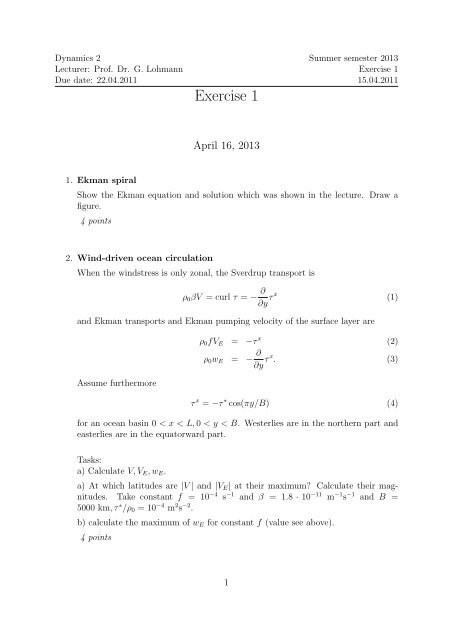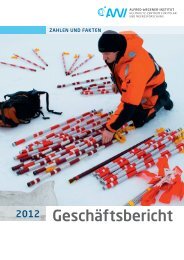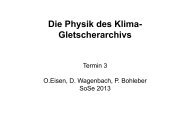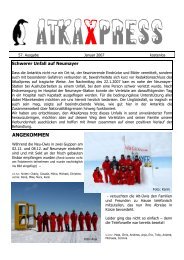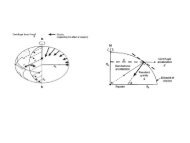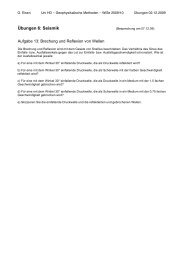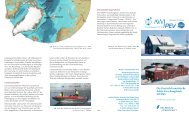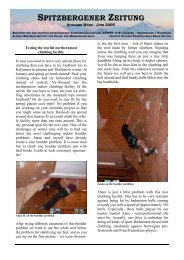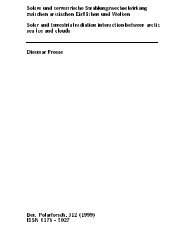Exercise 1
Exercise 1
Exercise 1
- No tags were found...
You also want an ePaper? Increase the reach of your titles
YUMPU automatically turns print PDFs into web optimized ePapers that Google loves.
Dynamics 2<br />
Lecturer: Prof. Dr. G. Lohmann<br />
Due date: 22.04.2011<br />
<strong>Exercise</strong> 1<br />
Summer semester 2013<br />
<strong>Exercise</strong> 1<br />
15.04.2011<br />
April 16, 2013<br />
1. Ekman spiral<br />
Show the Ekman equation and solution which was shown in the lecture. Draw a<br />
figure.<br />
4 points<br />
2. Wind-driven ocean circulation<br />
When the windstress is only zonal, the Sverdrup transport is<br />
ρ 0 βV = curl τ = − ∂ ∂y τ x (1)<br />
and Ekman transports and Ekman pumping velocity of the surface layer are<br />
Assume furthermore<br />
ρ 0 fV E = −τ x (2)<br />
ρ 0 w E = − ∂ ∂y τ x . (3)<br />
τ x = −τ ∗ cos(πy/B) (4)<br />
for an ocean basin 0 < x < L, 0 < y < B. Westerlies are in the northern part and<br />
easterlies are in the equatorward part.<br />
Tasks:<br />
a) Calculate V, V E , w E .<br />
a) At which latitudes are |V | and |V E | at their maximum? Calculate their magnitudes.<br />
Take constant f = 10 −4 s −1 and β = 1.8 · 10 −11 m −1 s −1 and B =<br />
5000 km, τ ∗ /ρ 0 = 10 −4 m 2 s −2 .<br />
b) calculate the maximum of w E for constant f (value see above).<br />
4 points<br />
1
Dynamics 2<br />
Lecturer: Prof. Dr. G. Lohmann<br />
Due date: 22.04.2011<br />
Summer semester 2013<br />
<strong>Exercise</strong> 1<br />
15.04.2011<br />
3. The Stommel model: of the wind-driven circulation in a homogeneous ocean of<br />
constant depth h is described by<br />
R∇ 2 ψ + β∂ x ψ =<br />
1<br />
ρ 0<br />
(∂ x τ y 0 − ∂ y τ x 0 ) (5)<br />
where R is a coefficient of bottom friction, β the derivative of the Coriolis frequency<br />
at a central latitude, and the 2-dimensional τ 0 the windstress vector. The depth<br />
integrated velocity is<br />
(U, V ) =<br />
Finally, ψ is the related streamfunction<br />
∫ 0<br />
−h<br />
(u, v)dz .<br />
U = −∂ y ψ, V = ∂ x ψ .<br />
a) Derive this equation from the conservation of momentum (linearized) and mass<br />
(volume!) assuming w = 0 at the mean surface z = 0 and at the bottom z = −h.<br />
For simplicity take Cartesian coordinates for the horizontal, β = df/dy. Boundary<br />
condition for the flux of momentum are τ(z = 0) = τ 0 and τ(z = −h) = R(−V, U).<br />
b) in the boundary layer the terms on the left hand side of (5) get large. Show by<br />
scaling that the width of the layer is W = R/β.<br />
c) how large must R be to get a width W = 100 km? (β = 2 × 10 −11 m −1 s −1 ).<br />
6 points<br />
Notes on submission form of the exercises: Working in study groups is encouraged,<br />
but each student is responsible for his/her own solution. The answers to the questions<br />
shall be provided at the tutorium at the due date.<br />
2


